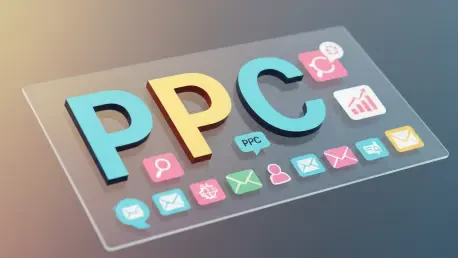The landscape of paid search has undergone a seismic shift, leaving many marketers grappling with outdated structures that once promised precision but now hinder performance, especially in an era dominated by automation. Consider a scenario where a sprawling account with hundreds of single keyword ad groups (SKAGs) consumes hours of management time, yet fails to deliver the expected efficiency. This challenge underscores a critical need to adapt to Google’s evolving algorithms and AI-driven preferences. The importance of moving away from legacy SKAGs cannot be overstated, as clinging to granular control often results in wasted resources and missed opportunities for optimization.
This guide dives into the best practices for consolidating SKAGs, offering a roadmap to streamline account structures while harnessing the power of data density. By transitioning to a more cohesive setup, marketers can reclaim time for strategic tasks and align campaigns with modern PPC demands. The following sections detail actionable strategies, supported by real-world examples, to ensure a balanced and effective shift from fragmented setups to consolidated success.
The Shift Away from SKAGs in Modern PPC
The traditional Alpha Beta account structure, once a cornerstone of paid search, relied heavily on SKAGs to provide granular control over bids, ads, and landing pages. However, with Google’s advancements in automation and AI, this approach has become less viable. The push toward machine learning and broader data inputs means that maintaining individual keyword ad groups often fragments data, slowing algorithmic learning and reducing campaign efficiency.
Sticking to legacy SKAGs in today’s environment limits adaptability to Google’s looser match types and preference for consolidated structures. As algorithms prioritize robust data sets over hyper-segmentation, outdated setups struggle to keep pace with the rapid optimizations enabled by automation. This disconnect can lead to inefficient budget allocation and missed performance gains in a competitive digital advertising space.
This guide focuses on the compelling reasons to consolidate SKAGs, highlighting tangible benefits like improved efficiency and simplified management. It also provides practical steps to navigate this transition without sacrificing essential control. By understanding the evolving dynamics of PPC, marketers can position their campaigns for sustained success.
The Case for Consolidating SKAGs
The meticulous maintenance of SKAGs, once a hallmark of precision, has become a relic in the face of Google’s algorithmic evolution. With match types growing less restrictive and the platform favoring data density, the effort to control every query is not only impractical but also counterproductive. Google’s systems now thrive on larger, unified data pools, rendering the manual oversight of single keyword groups an inefficient use of resources.
Consolidation offers distinct advantages, including a potential efficiency lift of around 10% when executed properly. Beyond performance, it streamlines account management by reducing the number of ad groups to monitor, freeing up time for high-impact tasks like strategy development. This shift also minimizes the risk of data cannibalization, ensuring budgets are allocated more effectively across campaigns.
Moreover, the areas of control that matter most have changed. Marketers can achieve better results by focusing on enhanced conversions, offline conversion tracking, and strategic negative keyword usage. Crafting user-focused ad copy further enhances relevance, proving far more valuable than the labor-intensive SKAG model. Consolidation thus aligns campaigns with current best practices while optimizing resource allocation.
Best Practices for Effective SKAG Consolidation
Navigating the consolidation of SKAGs requires a careful balance between data density and maintaining actionable insights. The process is not about abandoning control but redirecting it to areas where it yields the greatest impact. The following practices provide a structured approach to streamline accounts while avoiding common pitfalls, ensuring campaigns remain both efficient and insightful.
Each strategy is designed to address specific challenges of transitioning from fragmented setups. By applying these methods, marketers can enhance algorithmic performance without losing sight of critical performance metrics. Real-world examples illustrate the impact of these practices, offering clarity on how to implement them effectively.
Avoid Over-Segmentation for Better Data Density
Maintaining hundreds of ad groups under a SKAG framework often leads to fragmented data that hampers Google’s ability to optimize effectively. Over-segmentation results in inefficient budget distribution, as funds are spread too thinly across numerous groups. This setup also creates data overlap, obscuring true performance trends and making it harder to identify winning strategies.
The time spent managing an overly granular structure detracts from higher-value optimizations, such as refining audience targeting or testing creative variations. Consolidation addresses these issues by grouping related keywords, allowing for more cohesive data sets that fuel algorithmic learning. This streamlined approach ensures campaigns are not bogged down by unnecessary complexity.
Real-World Impact of Reducing Segmentation
A SaaS account with an initially sprawling setup saw remarkable improvements after consolidation. In the first month, the cost per opportunity dropped by 6%, followed by a 27% reduction in the second month, all while maintaining lead volume. These gains, independent of seasonal trends, highlight how reducing segmentation can directly enhance business outcomes by focusing resources on impactful areas.
Steer Clear of Over-Consolidation to Maintain Insights
While consolidation is beneficial, grouping too many keywords into a single ad group can obscure valuable insights. Such over-consolidation often leads to ads triggering for irrelevant queries, as Google prioritizes its revenue over campaign specificity. This lack of granularity makes it challenging to pinpoint which elements drive success or failure within a campaign.
Geographic disparities serve as a prime example of this risk. Combining dissimilar regions into one ad group can mask performance variations, resulting in budget waste on underperforming areas. Preserving some level of segmentation ensures visibility into critical differences, enabling more informed decision-making without reverting to SKAG-level fragmentation.
Example of Over-Consolidation Challenges
In one campaign, grouping diverse geographic regions together led to a significant oversight of regional performance disparities. Budgets were inadvertently funneled into low-return areas, as the consolidated structure hid inefficiencies. This scenario underscores the need for a measured approach to consolidation, ensuring data remains actionable for strategic adjustments.
Segment Strategically to Limit Google’s Loopholes
Strategic segmentation prevents Google from exploiting easy conversion paths that may not align with business goals. For instance, mixing brand and non-brand keywords often results in the algorithm favoring branded searches, which are less incremental despite their high conversion rates. Separating these categories forces the system to prioritize harder-to-convert, yet more valuable, non-brand traffic.
Similarly, grouping products with vastly different price points can skew results toward cheaper items that meet cost-per-acquisition targets but fail to maximize revenue. Using target return on ad spend helps, but grouping by similar price points offers better control. Additionally, balancing lead quality within ad groups, especially with enhanced conversions, ensures volume and value are optimized without sacrificing deeper-funnel outcomes.
Case Study on Strategic Grouping
A campaign that separated high- and low-quality keywords using enhanced conversions achieved a notable balance of lead volume and value. By setting realistic volume targets and optimizing for deeper-funnel actions like sales-qualified leads, the account avoided the trap of cheap, low-value conversions. This targeted segmentation demonstrated how strategic grouping can align Google’s algorithms with specific business objectives.
Leverage Negative Keywords to Protect Budget
Consolidated ad groups inherently risk attracting irrelevant queries due to broader keyword groupings. Aggressively deploying negative keywords becomes essential to shield budgets from wasted spend on unqualified traffic. This proactive measure ensures that campaigns remain focused on high-intent searches aligned with conversion goals.
While it’s impossible to block every irrelevant search, a directional approach to negative keyword coverage can significantly reduce waste. Regularly reviewing search query reports to identify and exclude off-target terms keeps the account lean. This practice is a critical safeguard, maintaining efficiency as consolidation broadens keyword exposure.
Practical Application of Negative Keywords
In a consolidated campaign, implementing a broad negative keyword strategy effectively curtailed irrelevant traffic. By identifying and blocking terms unrelated to the core offering, the campaign redirected budget toward searches with genuine intent. This application proved how tactical use of negatives can preserve resources for maximum impact in a less segmented structure.
Beyond Performance: The True Value of SKAG Consolidation
Consolidation of SKAGs often delivers a modest performance boost, as streamlined structures enable Google’s algorithms to operate with greater efficiency. Yet, the deeper value lies in the time saved through simplified account management, allowing teams to pivot toward strategic priorities like cross-channel optimization. This shift marks a departure from the manual grind of query-level control, freeing mental bandwidth for innovation.
Looking back, the hesitation to relinquish granular oversight often stemmed from a fear of losing precision, but the transition revealed smarter avenues for differentiation. Focusing on robust tracking, precise measurement, and user-centric ad strategies proved more impactful than SKAG maintenance. For teams managing complex accounts, this redirection of effort became a game-changer in achieving broader marketing goals.
As a next step, marketers are encouraged to audit existing structures and identify consolidation opportunities that balance data density with insight preservation. Experimenting with strategic segmentation and negative keyword tactics offers a low-risk way to test the waters. Embracing this evolution not only optimizes PPC outcomes but also positions teams to stay ahead in an increasingly automated advertising landscape.









